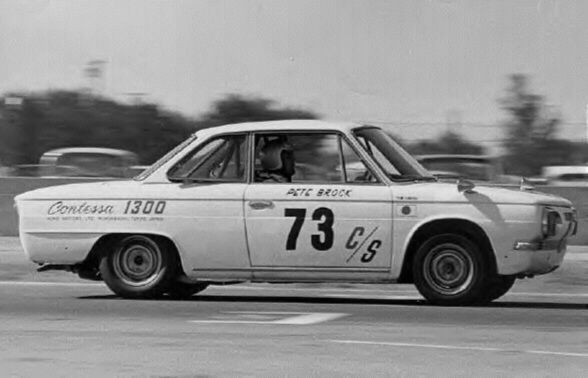Description
The Hino Contessa 1300 Coupé Racing was the competition-tuned version of the elegant Contessa 1300 Coupé, developed to showcase Hino Motors’ engineering capabilities and to promote the brand through motorsport. Introduced in the mid-1960s, it was based on the production coupé designed by Giovanni Michelotti but was extensively modified for racing use. The result was a lightweight, rear-engined sports machine that reflected both Hino’s technical ambition and Japan’s growing interest in performance motoring during the decade.
Externally, the Contessa 1300 Coupé Racing retained the beautiful lines of Michelotti’s design but featured functional modifications suited for competition. The body was often stripped of unnecessary trim to reduce weight, and wider wheels and tires were fitted for improved grip. Some cars received flared wheel arches, lightweight aluminum panels, and bonnet straps, while the bumpers were removed to save additional kilograms. The car’s aerodynamic shape, with its fastback roofline and low stance, gave it a natural advantage on the track. Painted in Hino’s signature white and red racing colors, the Contessa Racing Coupé presented an image of precision and determination that contrasted with the more conservative sedans dominating Japanese roads at the time.
Inside, the cabin was pared down to essentials. Lightweight bucket seats replaced the standard upholstery, the dashboard was simplified, and all unnecessary fittings were removed to save weight. A full set of performance gauges replaced the standard instruments, allowing drivers to closely monitor revs, temperature, and oil pressure during races. Safety equipment such as a roll bar and racing harness was added in accordance with contemporary racing standards.
The heart of the Hino Contessa 1300 Coupé Racing was its uprated 1,251 cc inline four-cylinder engine. Based on the production powerplant, it was heavily modified for higher output, featuring twin carburetors, a higher compression ratio, and reworked camshaft timing. Power output rose to around 80 horsepower—an impressive figure for such a small displacement engine in the mid-1960s. The engine remained rear-mounted and paired with a close-ratio four-speed manual gearbox. Thanks to its light weight and improved aerodynamics, the racing coupé could reach top speeds approaching 170 km/h (106 mph), depending on the tuning setup.
Handling was one of the car’s strongest points. The rear-engine, rear-wheel-drive configuration gave the Contessa excellent traction when exiting corners, while its independent suspension provided stability and agility. On twisty circuits, it was quick and well-balanced, though, like many rear-engine cars of its era, it demanded skill and finesse at the limit. Drivers praised its precise steering and the responsiveness of its small but eager engine.
The Contessa 1300 Coupé Racing competed in a variety of domestic motorsport events in Japan, including touring car races and hill climbs. It became one of the earliest Japanese cars to be recognized for its balance of design sophistication and performance engineering. Hino’s racing program helped raise awareness of the brand’s technological capability, and the experience gained from motorsport contributed to refinements in its production models.
Unfortunately, Hino’s promising motorsport development came to an end in 1967 when the company merged with Toyota, which discontinued Hino’s passenger car line to focus on commercial vehicles. The Contessa 1300 Coupé Racing, therefore, represents the peak and the conclusion of Hino’s short-lived but impressive venture into competitive automobile production.
Today, the Hino Contessa 1300 Coupé Racing is an exceptionally rare and historically significant car. It embodies a unique period in Japanese motoring history when small manufacturers like Hino dared to challenge larger rivals through design, engineering, and racing innovation. With its Italian styling, compact power, and superb handling, the racing coupé remains a captivating symbol of what Hino achieved—and what might have been—had its independent car-building ambitions continued.
